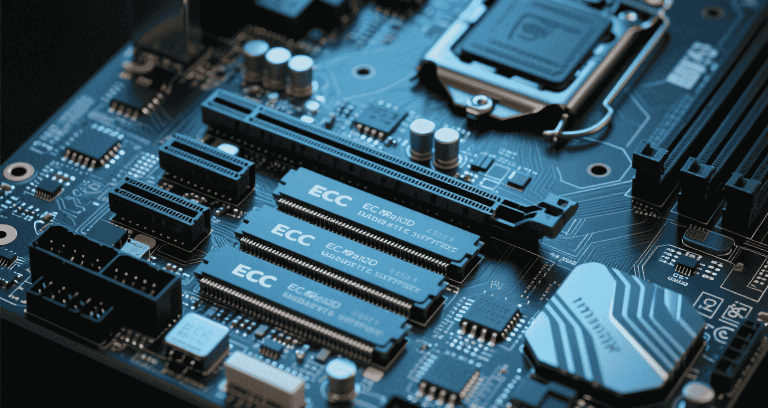Low Power Mini‑ITX Boards for NAS Builds

Table of Contents
- Introduction
- Core Technical Requirements for Low-Power NAS Builds
- Power Consumption and Performance Benchmarks
- Thermal Design for Quiet Operation
- Storage Considerations: HDD vs SSD
- Expansion, HBA Integration, and PCIe Strategy
- ECC RAM and Memory Sizing
- Power Supply Matching and Redundancy
- Networking and Remote Access Constraints
- Software Stack and System Monitoring
- Emerging Trends: Off-Grid and Private Builds
- Total Cost of Ownership and ROI Analysis
- Conclusion
Introduction
As data grows and becomes increasingly distributed, low-power NAS systems built on Mini-ITX motherboards offer engineers a compelling balance between size, power draw, noise, and expandability. These systems power homes, SMBs, and even edge deployments where 24/7 operation and power efficiency are paramount.
This guide provides deep insights for engineers and system integrators evaluating Mini-ITX for NAS use, combining real-world metrics with architecture-level advice.
Core Technical Requirements for Low-Power NAS Builds
To build an energy-efficient NAS, the base platform must deliver adequate IO, memory support, and network bandwidth without excessive idle power draw. Boards should support:
- 4+ SATA ports with native support (no port multiplexing)
- M.2 NVMe storage (PCIe x2 or x4)
- 2.5G or 10G networking (native or via PCIe)
- Low-power CPUs with ECC support if needed
Power Consumption and Performance Benchmarks
Engineers should design around idle and typical workload power rather than peak TDP. Real-world testing with SSDs and HDDs installed shows:
| CPU Platform | Idle (W) | Load w/ Drives (W) |
|---|---|---|
| Intel N5105 | ~11W | ~26W |
| AMD V1605B | ~19W | ~35W |
| Intel Atom C3558 | ~14W | ~32W |
A system running 24/7 at 20W consumes roughly 175 kWh/year — translating to ~$25–$30 annually, depending on region.
Thermal Design for Quiet Operation
Cooling strategy directly affects acoustic profile and longevity. For sub-25W systems, passive enclosures are viable.
Recommended Configurations
- Fanless: Aluminum chassis like Akasa Euler or Streacom FC8
- Semi-passive: Noctua 80mm or 120mm fans at 500–700 RPM
Use positive pressure designs with dust filters for longevity in dusty environments.
Storage Considerations: HDD vs SSD
While SSDs offer superior performance, HDDs remain cost-efficient for bulk storage. Engineers must balance power, IOPS, and thermal impact.
| Drive Type | Idle Power | Active Load |
|---|---|---|
| 3.5″ HDD (7200rpm) | 4–6W | 8–10W |
| NVMe SSD | 1W | 5–8W |
Expansion, HBA Integration, and PCIe Strategy
Mini-ITX boards with x16 PCIe slots allow powerful expansion with low-footprint HBAs, NVMe cards, and 10GbE NICs.
Recommendations:
- Use bifurcation-supporting BIOS if adding dual NVMe cards
- LSI 9211-8i (IT mode) is a stable choice for SATA expansions
- Ensure power delivery (12V rail) can handle spin-up loads
ECC RAM and Memory Sizing
ECC memory helps prevent silent data corruption — a critical issue for ZFS and Btrfs-based NAS systems. Check SoC and board-level support carefully.
Rule of thumb: 1GB RAM per TB of storage for ARC. Minimum 8GB; 16–32GB preferred.
Power Supply Matching and Redundancy
Oversized PSUs degrade efficiency. Target 60–70% typical load for peak efficiency.
PSU Options
- PicoPSU 120W + power brick for ultra-low-power builds
- Corsair SF450/SF600 (SFX) for modular, quiet power
- UPS integration (APC, CyberPower) for graceful shutdown
Networking and Remote Access Constraints
Integrators must plan for dynamic IPs, firewall traversal, and off-site access.
Solutions:
WireGuardorTailscalefor secure tunnel access- DDNS or IPv6 if no static IP
- Enable Jumbo Frames and LACP where backup speeds matter
Software Stack and System Monitoring
Common stacks for low-power NAS deployments:
- TrueNAS SCALE – Debian + ZFS
- OpenMediaVault – Debian-based, minimal footprint
- UnRAID – USB-based licensing, strong Docker/VM support
Monitoring Tools:
- Prometheus + node_exporter
- Smartctl / smartd for disk health
- lm-sensors and fancontrol for thermal feedback
Emerging Trends: Off-Grid and Private Builds
NAS designs are increasingly deployed in off-grid and edge compute settings.
Trends to consider:
- 12V DC-input NAS for solar-powered systems
- Battery-backed embedded boards with minimal overhead
- Nextcloud or Syncthing on lightweight Debian builds
Total Cost of Ownership and ROI Analysis
Engineers must consider long-term cost beyond BOM. Power and downtime drive operational ROI.
| Idle Power | Annual Cost @ $0.12/kWh |
|---|---|
| 10W | $10.51 |
| 30W | $31.54 |
| 60W | $63.07 |
Choosing a 20W platform over 60W saves ~$40/year — adding up across fleets or deployments.
Conclusion
Mini-ITX boards optimized for NAS use present engineers with a toolkit for designing quiet, scalable, and energy-efficient systems. When selecting a platform, focus on real-world idle draw, storage interface mix, ECC capability, and cooling compatibility.
By planning with component synergy in mind, integrators can ensure systems that are not only reliable and performant but also cost-efficient over years of operation.
For board options and compatibility lists, visit MiniITXBoard.


